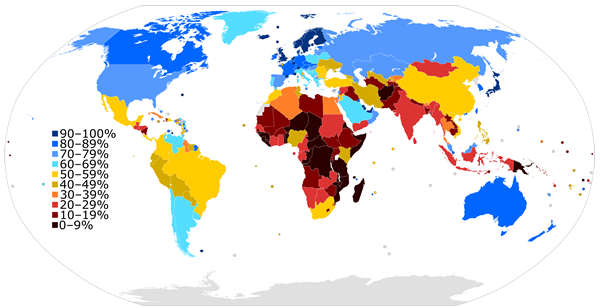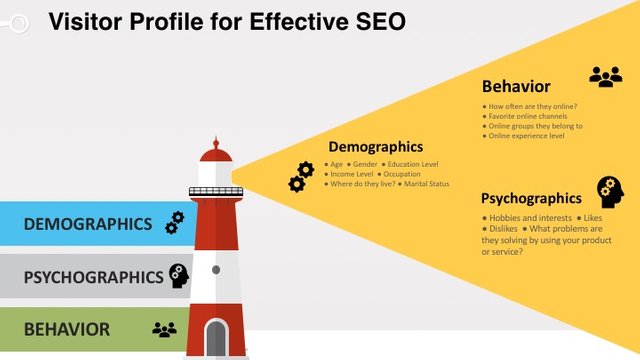The Myth Magic and Mystery of SEO - Part 2 The Marketing Mindset

Marketing efforts rely on SEO. But to be effective, SEO must rely on some bedrock marketing principles. Marketing is often as mysterious and myth filled as SEO, so let’s define what marketing really is in one sentence.
Marketing is nothing more than clearly and effectively communicating, using a variety of media, to show and tell the world the value of your product.
SEO is the beginning of showing the world your product, service, or idea. Marketing and SEO are very tightly tied together and to be successful at either one, you must develop the right mindset.
Having a Marketing Mindset is a BIG part of SEO. If you follow the number one rule of marketing, and wrap your mind around it, and keep it in the front of your mind with every single word you write, every video description, every tag - you’ll have SEO in the bag and a big leg up on your marketing.
What Is The #1 Rule of Marketing?
The number one rule of marketing AND SEO is
“Know Your Customer”
Before you write a single sentence, before you shoot one second of video, sit down and think about WHO you want to visit your page and consume your content.
Why is this so important? There are billions of people online every day. They are shopping, interacting with others, telling the world about themselves, conducting business and doing all the thousands of things the online world makes possible. They are not all the same. They are not all looking for the same things or interacting with the same people.

They form themselves into “tribes” online. They may come from all corners of the world, but they will hang out with people who share their likes, dislikes, those who are similar to themselves in many ways.
Let’s use American politics as an example. There are three main groups - Republicans, Democrats, and Independents. They are sharply divided by how they view the world, and the events that happen in it. They likely live in the same places - Republicans tend to live in smaller towns in rural areas, while Democrats tend to live in major cities. The three groups have different wants and needs, look at the same things in a totally different way than the members of the other two groups. They have different levels of tech and internet knowledge. Different levels of education, income, and age. They hang out in different places online.
It is virtually impossible to appeal to all three groups equally. They use different words to conduct a search, certain phrases will trigger one group to action while the same words will have a negative effect on another group and trigger the opposite reaction.
When you are setting up your SEO work, you MUST know WHO you are trying to reach with your efforts. While political parties are an extreme example, every person online belongs to at least one tribe of like-minded people. If the words you use in your title appeal to older people and you’re trying to get your content in front of millennials, you may have lots of traffic to your page, but it will be worthless traffic because the visitors you attract will not be the visitors you need and want.
So the first step in SEO is marketing based - figure out WHO you want to consume your content and take the actions you want them to take. Set up a profile of your perfect visitor. If the goal of your efforts is to have that visitor become a Steemian, your content needs to appeal to the people who might be interested in blockchain endeavors. You need to develop a “visitor based” marketing mindset and every title you write, every search term you use, every description you craft needs to appeal to that perfect visitor.
Here’s a visual depiction of some of the most important things about your perfect visitor that you need to keep in mind when creating your content and your SEO campaign.

The three main areas are Demographics, Psychographics and Behavior Patterns.
Demographics
include things like age range, income and education levels, gender, and where they live. Occupation such as office worker, construction worker, hospitality and retail worker often are included in demographics and occupation level such as CEO, middle management or “worker” can also be an important demographic point.
Psychographics
involves the mental characteristics of your perfect visitor. It includes their goals, their likes, their dislikes, their areas of interest. What motivates them? What creates anxiety for them? If your goal is to have your visitor become a Steemian, and you produce a sentence like this:
Steemit is a blogging platform that allows you to be paid with Steem Tokens which can then be traded in for the cryptocurrency of your choice.
I can guarantee that the middle aged woman writing blogs from her farmhouse in Nebraska during the winter for extra income will click off your page so fast your head will spin.
Why? Because she has been inundated with headlines and stories about how crypto and the blockchain are just a scam to take her hard earned money. The words cryptocurrency, and blockchain token cause great anxiety and negative feelings in this visitor.
If you want this visitor, those keyterms will not attract them, and if you use keyterms that WILL attract this visitor segment, you must be very careful to explain Steemit in terms they will understand and that will not inspire fear, anxiety and downright loathing. Those are NOT the feelings that will motivate this visitor segment to take the action you want - joining the Steemit community.
Behavior patterns
mostly center around the potential visitors' internet usage. Where do they go online? What are their favorite places to visit? What they DO when they are online? What websites and groups are they members of or would likely join? WHEN are they online? How often? How much time do they spend online? How fast is their connection? How comfortable are they with the online world?

Once you have a good profile of the perfect visitor you want to attract to your content, you can begin looking for the keyterms you will use to get your content ranked high enough in the Search Engine Results Page (SERP) to bring that content to their attention.
That’s what we will begin exploring in the next installment of this series - Rooting out the best keyterms for the visitor segment you want to attract to your content. Key terms are tricksey little monsters and taming them is perhaps the most important part of any SEO effort.
Why Am I Writing This Stuff and How Will It Help Steem and Steemit?
I’ve been helping clients reach good rankings and teaching SEO for more years than I care to think about. Some of you may have taken part in Discord workshops and tutorial sessions I’ve had with various groups here on Steem. Because the blockchain is based on transparency and openness, it’s time to bring that training out from the private Discord groups for everyone on Steemit.
If we want Steem and Steemit to grow, we need to be able to compete for eyeballs on the traditional net in an effective manner. Thus, we need to know and understand SEO because it is the primary mover behind getting those eyeballs on our content. By breaking down SEO into manageable chunks of information, I’m hoping everyone reading these articles will be able to improve their own rankings and turn more conventional net people into Steemians.